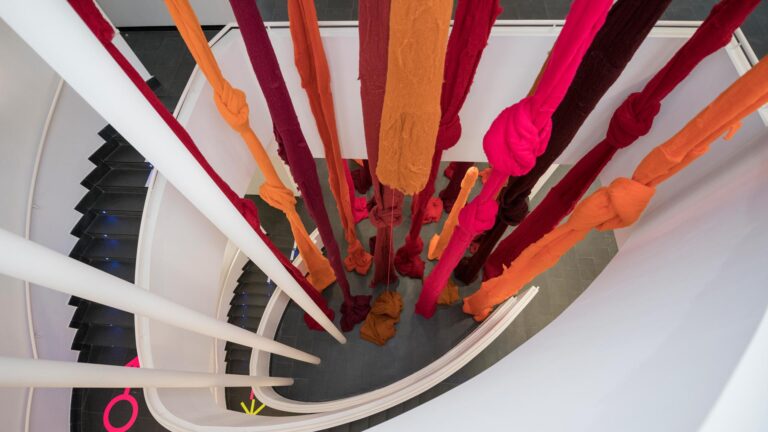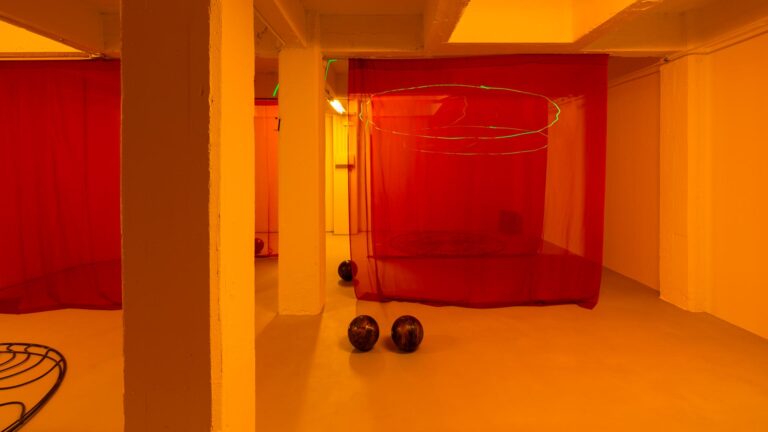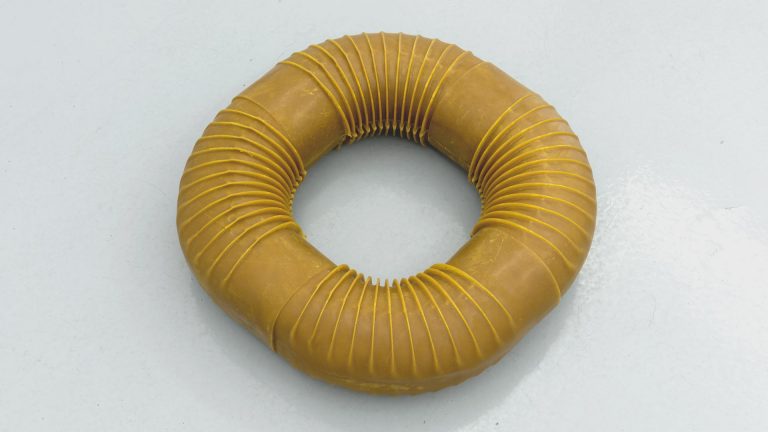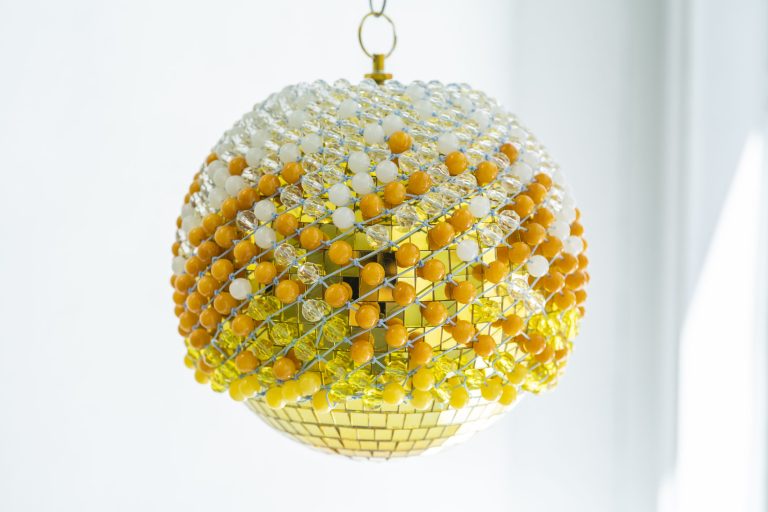Artist: Cybéle Varela
Exhibition title: Why not?
Venue: Galería Isabel Hurley, Malaga, Spain
Date: June 21 – August 2, 2024
Photography: all images copyright and courtesy of the artists and Galería Isabel Hurley, Malaga
This is Cybèle Varela’s first solo exhibition at the Isabel Hurley Gallery since 2022, when she exhibited jointly with Pepa Caballero. This time the Brazilian artist presents a new group of older pieces dating from the beginning of the 1990s – pictures, paintings and one object- that echo aspects of her earlier production and herald much of what would happen in the following years.
A self-taught artist, born at the beginning of the 1940s in the Rio de Janeiro mountains, Varela began to paint at an early age. Following in the steps of her mother she first studied to be an opera singer but soon lost interest in a future on stage and signed up for a painting course at the Museo de Arte Moderno in Rio de Janeiro [MAM-RJ] and decided to pursue a life in the visual arts. However hints of the performing arts and the creation of scenographic moments are present through all the different stages of her life’s work.
Varela came-of-age professionally at a complicated political and social period, marked by the civil-military coup of 1964 that installed a violent dictatorship that lasted 21 years. Outside Brazil, these were convulsive years on an international scale that brought a series of social injustices to the forefront and culminated in the upheavals of May 1968; a new wave of international feminism, the strengthening of the Black Power movements, the independence of a series of colonies and the emergence of theories linked to these liberation organisations.
The transformations happening in the second half of the 1960s imbue Cybèle’s painting and it is easy to detect in her works the gaze of a sensitive artist who observes her surroundings and asks questions about morals, the role of women in society and the status quo with gentle humour and irony. But despite the subtlety and obliqueness of her criticism, her work O presente (1967) was censured and removed from the IX Bienal in São Paulo by the military authorities. This incident triggered her exile to Paris the following year. As with so many other artists, Varela’s work was marked by this episode and her experience as an emigrant is the central theme of her biography.
Before this moment, during her study years at the MAM[RJ], between 1962 and 1966, Cybèle came into contact with a generation of young, politically committed artists who were incorporating elements of urban culture, symbols from mass communication media and ad-speak into their works. During this period her painting became more imaginative and dream-like, strongly influenced by comics, children’s stories and films, work more directly linked to the New Brazilian Figuration and Objectivity movements. Daily life, the fast pace of urban Rio de Janeiro fascinated the artist who portrayed this universe in works of vibrant colours and simple shapes painted with Eucatex industrial paint. Another striking aspect of this phase of her production is the geometry of zebra crossings, city walls, rays of sunshine and the colours of the pedestrians’ clothing. The hustle and bustle of these bodies in the space reinforce the movement and notion of sequence in the paintings which take us back to her earlier work and fascination for the cinema and comics. Perhaps these paintings may have been prompted by Cybèle’s life at that moment as she commuted daily from Petropolis to Rio de Janeiro on public transport and compared the changing landscape from the window to still frames from a film. This fragmented cinema effect is emphasised by the various parts of the canvases that togther form an entire picture.
A restrospective look at her production in this period allows us to understand much of what we see in her later works. A number of elements which we have seen, for example in the paintings of the 60s, are present in the group of pieces presented here. The fragmentation could be explained because Varela learned to paint in a room full of old furniture converted into a studio. She herself explains that she had to find a way to ensure the large dimensions despite the limited space. So, she began to construct her work in parts, on canvases each measuring one square metre that fitted on the easel and were then combined to create the large compositions.
The painting Once Upon a Time (1997) is a case in point. It comprises 12 parts and is reminiscent of Varela’s boxes and puzzles painted at the end of the 60s and beginning of the 70s in which the artist invited the spectator to move the different parts around and create new compositions. In Once Upon a Time the parts cannot be recombined or reorganised but it is clearly a fragmented image where the pieces do not quite completely fit.
This work, the title of which refers to the beginning of all fairy tales, is full of fantasy and references to Varela’s literary, imaginary and pictorial universe. It was painted in Thoiry, a small French village at a particularly delicate moment in the artist’s life. After almost a decade in Paris where Cybèle was part of the effervescent local artist scene and began branching out to a more conceptual area, experimenting with photography, video and performance, she had to move to Switzerland at the end of the 70s. She spent a long time in Geneva and linked up with local artists. However, for personal reasons, she once again had to move, this time to the village of Thoiry. This last move heightened the feelings of isolation and loneliness and a certain nostalgia that had accompanied her since the first years in Paris. The urban scenes of Rio de Janeiro in the canvases of the 60s gave way to interiors. If, in the 70s in France, Varela made this nostalgia real by painting exotic, touristic, idealised scenes of Brazil or simply by observing the light coming in through the window, at the end of the 90s she turned even more to self-contemplation. This introspection brought her to an exercise in self-analysis that allowed her to take more risks, embody different characters through whom she commented on aspects of her own life and the lives of so many vulnerable women and people.
Once Upon a Time is a self portrait, a persistent presence throughout the artist’s life. One of the first examples is dated 1967 when she painted herself as a five-year old. In the 1997 version we can see an excercise of imagination, a performative aspect and a scenic preparation before the work is undertaken. The artist appears transformed in a blond wig, blue contact lenses, red gloves, red-painted face and black lipstick. Varela is clutching a child’s teddy bear and other reminders of her childhood float over the surface of the canvas. Other references to this specific period in her life are recurrent in her work. A 3×4 cut out of this portrait remind us of the snaps taken in a photo booth. The same figure appears again in the lower part of the canvas, this time with gloves, a blue-painted face and wind-blown hair. The geometry, so characteristic in her earlier paintings, also catches the eye in the lineal structure of the artist’s easel which dominates across the canvas. And finally, the Brittany landscape forms the background, specifically the Standing Stones of Carnac, a dense collection of 3,000 dolmens and menhirs erected more than 5,000 years ago by hunter-gatherer communities.
This landscape substantiates another fundamental aspect of Valera’s work: the coexistence and superimposition of different historical references and periods. Her years of art history studies at the École du Louvre and social anthropology at the École Pratique des Hautes Études where she studied the body painting of various indigenous peoples, played an important part in this development. In Once Upon a Time the symbolic and spiritual weight of the pre-historic monuments, erected to pay tribute and perform pagan rituals to the dead, cross paths with the reference to the use of natural red pigments as a form of protection and defence associated with shamanism and the cultures of certain native peoples.
In the year following this painting Varela again interpreted the same role in a series of photographs. Photography figured early on in her creations, either as stand-alones or as support in her paintings. Photography has almost always maintained a dialogue with painting and in some cases Cybèle reviewed her canvases and created new compositions of performances, based on the relevant images. In photographs of the Why? and the Once Upon a Time series, using as a starting point and backcloth the 1997 painting of the same name, the artist has constructed a sort of housewife’s diary based on simple actions like cleaning one’s teeth or curling one’s hair. This repetitive routine is evocative of Jeanne Dielman portrayed by the Belgian film director Chantal Akerman. However, unlike the filmed personage, Cybèle allows herself the luxury of blowing soap bubbles and having fun with her own image. Even so, like Akerman, Varela’s photographs ridicule the suffocation of an isolated domestic life without perspectives and the difficulties in reconciling it with a profession.
The ballet shoes point us to part of the essence of the works: they are for flight and escape. At the same time they are a metaphorical hint at the ideal of beauty and lightness that carries a heavy burden of dedication and personal sacrifice beneath. More specifically, the ballet shoes also refer to some female garments and other painful daily habits adopted by women through the centuries that have conditioned their physical aspect, their movements and their freedom of expression.
Isabella Lenzi, June 2024














































